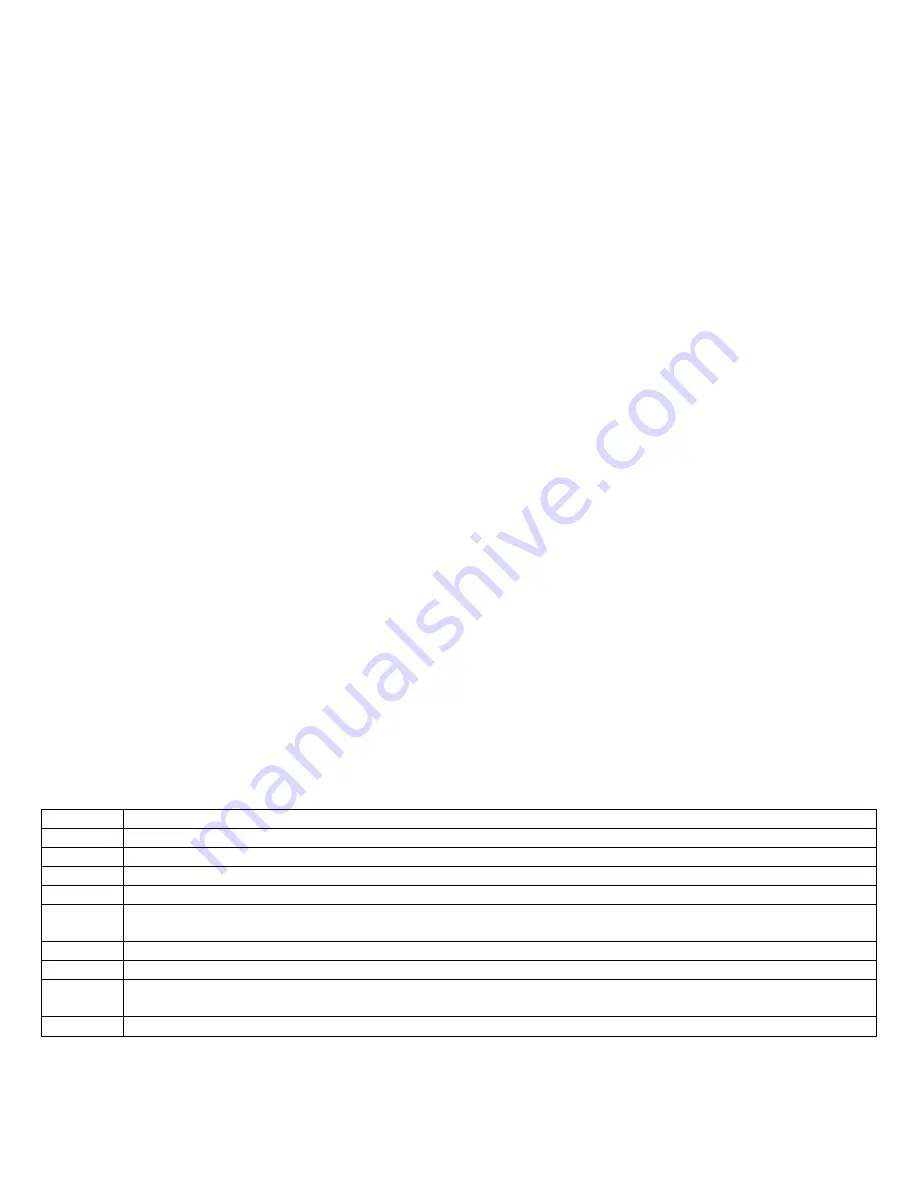
29
Zero Notify
–
ZERO NTFY: If this option is set to “YES”, then each time the scale is zeroed or a zero command is sent through one of the
communication ports, the indicator will wait for the scale to stabilize and detect if there is no motion. Once these conditions are
detected, the word “ZERO” appears on the output terminal in ASCII.
Control Source
–
CONTROL: This option can be switched between Motion, Stability, Motion and Stability based on your preferences.
This determines how you want the Print at Stability to operate, whether based on Motion Detect, Stability Control or both. It is
important that when you choose these options, these features need to be activated within the system to operate properly.
Print Stream Mode with Print-At-Stability
Print Stream and Print at Stability can work together. If you want the scale to print weights constantly, then activate both of these
features together and they will work in tandem with each other.
Print Frame
The print frame is a list of up to 20 functions for the scale to perform each time a print request is received. The list is executed in the
same order as shown is shown. A function can either be an item to be printed or a command for the scale.
Defining and Editing the Print Frame
Go to the menu SETUP MENU/OPTION SETUPS/RS485/PRINT FRAME.
Default Print Frame
By default, the Print Frame has two functions stored; Weight and Unit with Carriage-Return (CR) and Line-Feed (LF) at the end of the
Frame. This allows the scale to print out the weight and unit to the RS485 output.
This is what a 25.5lb weight would look like on a 620L scale equipped with RS485 printed on Serial Port Terminal:
25.50 lb
Defining a Custom Print Frame
To re-define the frame, line up on NEW on the lower menu and then press ENTER to add a function. The function NULL will be added
to the list. We want to change this to the WEIGHT function. Press the right arrow key to line up on FNC+ on the lower menu. Press
ENTER twice to select the WEIGHT function. To add a CR to this function, use the right arrow key to line up on CR on the lower menu
and then press ENTER.
You will then see a check mark under the column “C”. To turn on the LF, press the right arrow once
more to line up on LF and then
press ENTER. This completes the definition.
The lower menu items on the frame editing screens are outlined below.
Selection
Description
NEW
Adds a new default function (NULL) to the function list.
INS
Inserts a new function (NULL) before the currently selected function line.
DEL
Deletes the currently selected function line.
FNC+/-
Changes the function of the current line. Available functions and their explanations are outlined below.
SRC
On many of the functions you need to specify the source of the data. For example, the WEIGHT function must know what
platform the reading should come from. SRC will step through all available platforms.
CR
Includes a carriage return at the end of the current function
LF
Includes a line feed at the end of the current function.
SP
Allows you to print space(s) at the end of the current function. When activated a “?” will show up in the function list on
the current line and allow you to enter a number. The number of spaces must be between 0 and 15.
TEST
Quickly test the print frame without having to return to the scale’s normal operating mode. (Future Expansion)






























